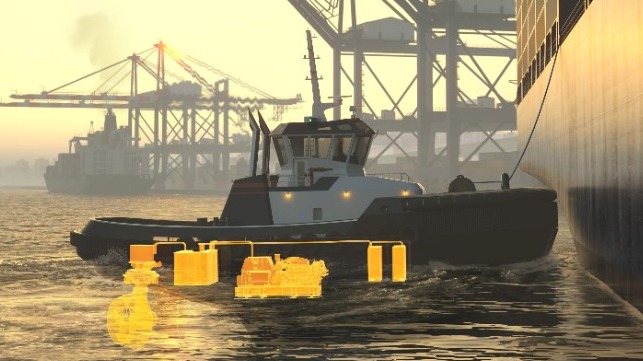Hybrid-Methanol Tug Offers a Bridge to Zero-Carbon Towage

Working with ABB, the naval architecture firm Glosten has designed a hybrid-drive ship assist tug that would run on methanol.
The 100-foot ASD tug would be powered by twin methanol-compatible generators connected to electrically-powered L-drives and a set of battery banks. The batteries would provide enough power for zero-emissions operation while transiting, plus a power boost for peak bollard pull when needed.
“We had three primary design objectives in developing this tug—all intended to benefit the owner/operator,” said Peter Soles of Glosten, who leads conceptual development for the firm's tug designs. “First, to provide assurance of regulatory compliance and future adaptability; second, to achieve meaningful improvement in environmental performance; and lastly, to control opex costs such that assist services can still be offered at competitive rates.”
Like many others in the field, Glosten believes that methanol is a good option for a fuel on the pathway to decarbonization. It does not require cyrogenic or pressurized storage, and it can be used in conventional diesel-cycle engines. The engineering for many powerplants to run on methanol has already been completed and off-the-shelf engines are available. It requires no major modifications to transport, store or use, and methanol-tanker operators have already developed years of experience in using it as a marine fuel.
For environmental performance, methanol is sulfur free and emits less NOx and PM than conventional diesel. If it is produced from renewable resources like biogenic carbon and green hydrogen (as is planned by number-two ocean carrier Maersk) it can be a zero-carbon fuel.
“Every tug operator is trying to determine their company’s path through this new hybrid and electric world," said Dave Lee, Global Workboat Responsible, ABB Marine & Ports. "With this design, the operator will reap some of the instant power availability and operational savings of an electric vessel, without the need to 'plug in' at the dock. At the same time, it will allow them to realize a substantial reduction in EPA criteria emissions."
